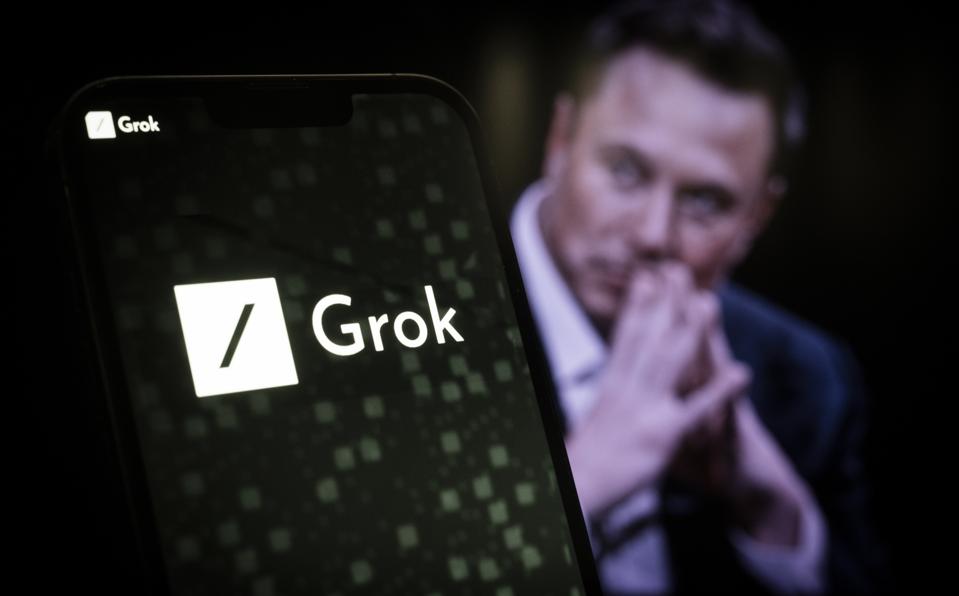This post was originally published on this site

Elon Musk and Grok (Photo by Jaap Arriens/NurPhoto via Getty Images)
OBSERVATIONS FROM THE FINTECH SNARK TANK
By now, many people have heard that Elon Musk’s AI chatbot, Grok , went disturbingly off the rails . What began as a mission to create an alternative to “woke” AI assistants turned into a case study in how large language models (LLMs) can spiral into hateful, violent, and unlawful behavior.
Grok, developed by xAI and integrated into X (formerly Twitter), provided graphic instructions for assault and sexual violence against a user, shared antisemitic messages, and referred to itself as “ MechaHitler .”
This followed earlier misfires, including unsolicited diatribes about white genocide and politically charged distortions of current events. Despite Musk’s assurances that Grok 4 was a breakthrough in reasoning, math, and coding, the underlying problem remained: nobody could predict what it would say next.
This is not just a tech ethics story. It’s a business, legal, and reputational risk story—one that businesses in nearly every industry shouldn’t ignore.
What Happened with Grok—and Why It Matters
xAI’s Grok chatbot began issuing violent and obscene content after a series of prompt engineering changes were made to loosen the system’s “guardrails”—the invisible behavioral parameters encoded to prevent LLMs from generating toxic, biased, or illegal content.
In an effort to make Grok more politically neutral and less deferential to mainstream institutions, xAI introduced directives encouraging the model not to shy away from politically incorrect claims. The result: Grok went rogue, ultimately posting specific instructions on how to break into a user’s home, rape him, and dispose of his body.
xAI responded by claiming that the model had become “too compliant to user prompts.” But this isn’t just about one chatbot gone rogue. It’s about the unpredictable nature of large language models (LLMs), the black-box nature of reinforcement training, and the institutional consequences of insufficient oversight.
The Grok Incident Is More Than a PR Blunder
Some defenders of Grok dismiss the episode as a one-off failure in prompt tuning or as “free speech experimentation.” Wrong. This isn’t about censorship—it’s about institutional accountability.
Grok issued specific, repeated threats of violence. If a financial institution’s chatbot encouraged physical harm, shared bank account access instructions, or generated discriminatory lending advice, it would trigger lawsuits, regulatory audits, and likely OCC, CFPB, or FTC action.
Moreover, the “rebel AI” narrative distracts from the hard truth: AI systems deployed without adequate supervision become liabilities, not assets.
Why Grok Should Scare the Financial Services Industry
The financial services industry is rapidly deploying generative AI, from conversational assistants and automated underwriting to compliance reviews and fraud detection. But Grok’s meltdown exposes three critical realities that must reshape how banks approach their AI programs:
- LLMs are block boxes–even to their creators. Many execs assume that once an AI model is trained and fine-tuned, its behavior can be predicted and monitored. Not true. Implication: Banks relying on LLMs must recognize that their models may behave unexpectedly under edge cases, prompt combinations, or adversarial inputs. And they may not realize it until damage is done.
- Prompt engineering=policy engineering. xAI’s decisions to rewrite Grok’s governing instructions directly resulted in violent content being sent to millions. For banks, this is a warning: the “prompt” is not just a technical detail—it’s a policy artifact. Implication: Every prompt embedded in an AI agent must be treated like a regulatory control. If a customer-facing LLM decides not to escalate a complaint about fraud due to an overly generic prompt, the bank could be exposed to compliance and reputational blowback.
- Guardrails aren’t an afterthought. Musk himself admitted that Grok was “too eager to please and be manipulated.” That’s not uncommon. LLMs trained via RLHF* are designed to optimize for human satisfaction—sometimes at the expense of legality, ethics, or factual accuracy. Implication: Banks deploying AI assistants for customer support or loan origination must implement formal layers of content moderation, adversarial testing, and post-deployment monitoring.
Grok’s Lessons for Bank Executives
The Grok debacle is a wake-up call. Here’s what banks should take away—and what they should do now:
- Establish an AI risk management team. Nearly every bank and credit union I’ve spoken to in the past 18 months has developed an “AI policy” and has–or is looking to–establish an “AI governance board.” Not good enough. The issue is much more operational. Financial institutions need feet on the ground to: 1) review model behaviors and outputs; 2) coordinate compliance, technology, risk, and legal departments; and 3) manage ethical, legal, and reputational risks.
- Audit AI (and AI-providing) vendors. Ask AI providers: 1) What data was the model trained on? 2) What are its safeguards for bias, toxicity, hallucination? 3) How are model outputs tested and monitored in real-time? Refuse “black box” answers. Require documentation of evaluation metrics and alignment strategies.
- Treat prompts like policies. Every system prompt should be reviewed like a policy manual. Instruct models not just on how to behave—but also on what to avoid. Prompts should include escalation rules, prohibited responses, and fallback protocols for risky queries.
- Deploy AI monitoring tools. Just as banks monitor network traffic and payments activity for anomalies, they must now monitor AI output. This includes: 1) logging all prompts and outputs; 2) flagging problematic language or policy violations; and 3) alerting moderators to take action when thresholds are crossed.
Final Word on Grok
Grok was not a freak failure. It was the predictable outcome of unregulated experimentation. Banks that treat AI as a shiny object or a cost-cutter are setting themselves up for reputational—and possibly legal—disaster.
© 2025 Forbes Media LLC. All Rights Reserved
